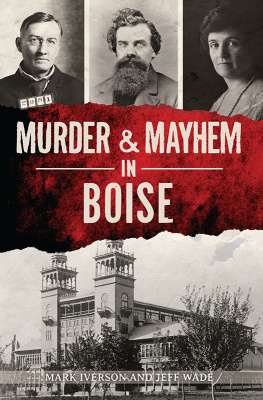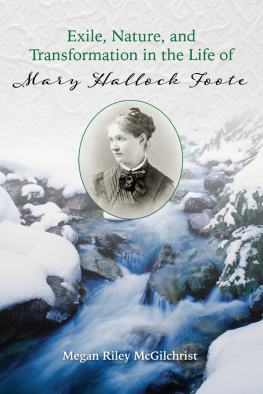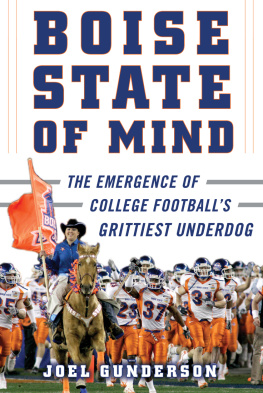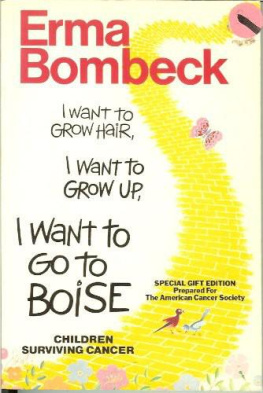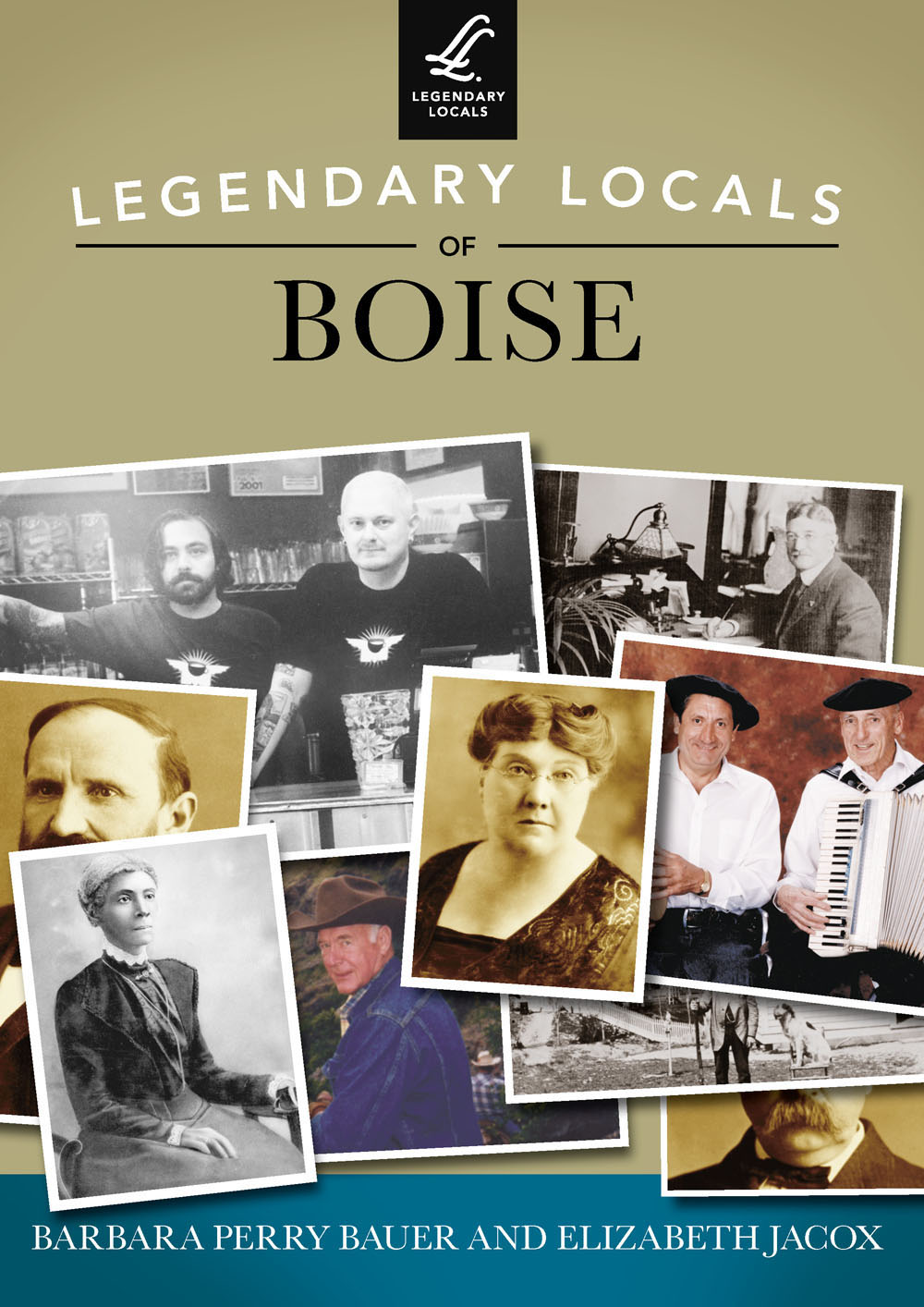
LEGENDARY LOCALS
OF
BOISE
IDAHO

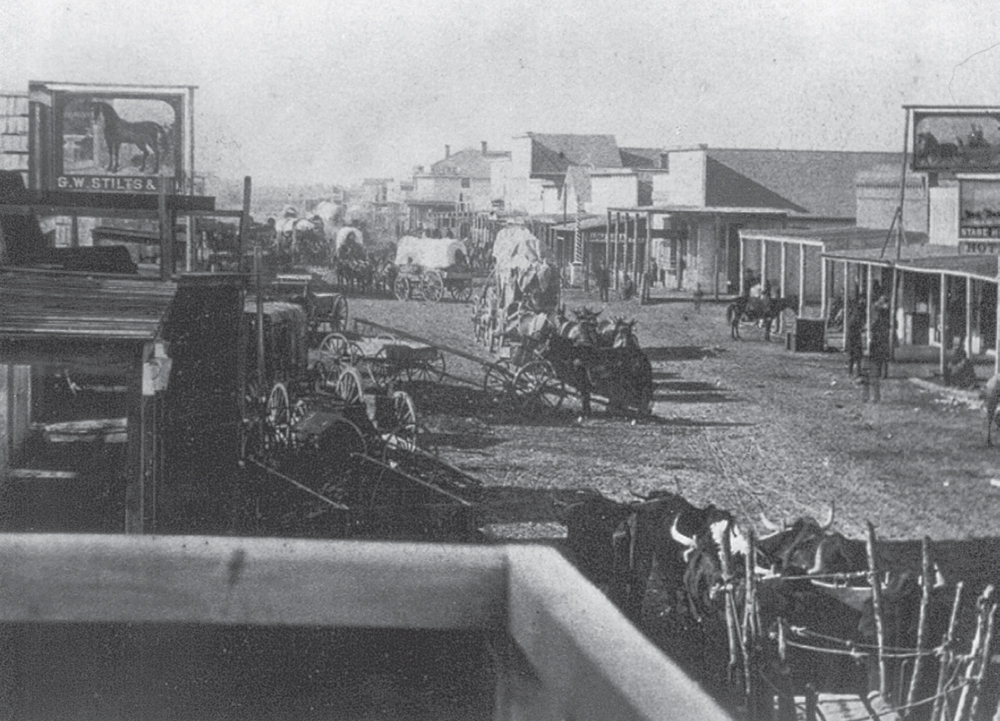
Boise
This is one of the earliest known views of Boises Main Street, dating to around 1866. (Courtesy of the Idaho State Historical Society.)
: Pioneers
Boise pioneers gather at Frank Coffins tin shop near the corner of Eighth and Main Streets in April 1894. The building was demolished not long after this photograph was taken. (Courtesy of the Idaho State Historical Society.)
LEGENDARY LOCALS
OF
BOISE
IDAHO
BARBARA PERRY BAUER AND ELIZABETH JACOX

Copyright 2015 by Barbara Perry Bauer and Elizabeth Jacox
ISBN 978-1-4671-0166-0
Ebook ISBN 9781439653609
Legendary Locals is an imprint of Arcadia Publishing
Charleston, South Carolina
Library of Congress Control Number: 2014933472
For all general information, please contact Arcadia Publishing:
Telephone 843-853-2070
Fax 843-853-0044
E-mail
For customer service and orders:
Toll-Free 1-888-313-2665
Visit us on the Internet at www.arcadiapublishing.com
Dedication
We dedicate our book to all the individuals of the past and present who have created and sustained our beautiful city.
On the Front Cover: Clockwise from top left:
Will Gillet (right) and Kent Collins, Flying M Coffeehouse (courtesy of Melanie Folwell; see ).
On the Back Cover: From left to right:
Harlan P. Ustick (in top hat) (courtesy of the Idaho State Historical Society; see ).
CONTENTS
ACKNOWLEDGMENTS
Boises history has been well documented. Merle Wells, Arthur Hart, Todd Shallat, J.M. Neil, and Faith Turner are only a few of the outstanding historians who provided a foundation for us. The photographs in this book have come from many sources, and we gratefully acknowledge the assistance of Brandi Burns and Karen Bubb of the Boise City Department of Arts and History; Patty Miller of the Basque Museum and Cultural Center; Julia Stringfellow and Jim Duran of the Special Collections Department, Albertson Library, Boise State University; Marcia Franklin, Bruce Reichert, and Jeff Tucker of Idaho Public Television; Jenaleigh Kiebert of the Idaho State Archives Research Library; and Joe Jaszewski of the Idaho Statesman. Photographs and information were provided to us by Cecil Andrus, Mark Baltes, Robynn Browne, Kim Coe, Kent Collins, Dan Everhart, Melanie Flitton Folwell, Maureen Ingram, Rebecca Kelada, Margaret Lundy, Theresa McLeod, Sally Mitchell, Alison Perry, Marjorie Rabdau, David Nels Reese, Angie Stevens, and Jon Swarthout. Invaluable support was provided by our assistant Jennifer Lee, intern Kyle McCormick, and Larry Burke, who knows a lot more about sports than we do. We wish to thank our editor, Erin Vosgien, for her patience and assistance as we slowly developed this book.
Any list is subjective, and the legendary locals we selected for this book will not be the same as a list created by someone else. We based our choices on our own experience doing research over the past 20-some years and on conversations we have had during that time with others about Boise history. Readers will no doubt find names missing or included in the book that would not match their own selections. We cheerfully acknowledge that we do not know everything, but we hope that our book will prove enjoyable and informative, and perhaps spark some friendly debates.
INTRODUCTION
Through Boises 150-year history, a parade of actors have played central roles in the story of the city. Initially, the area was home to the Shoshone, Bannock, and Paiute tribes, who inhabited the area for generations. Until the 1860s, the area that became Idaho was passed through by Euro-American settlers on their way to Oregon and California. The dry climate and desert terrain held little charm for people headed for the green fields of the Willamette Valley or the glittering gold of California. But when gold was discovered in north Idaho in 1860 and in the Boise Basin in 1862, people began to stream to the rivers, plains, and mountains of Idaho. When Fort Boise was established by the US Army in 1863 to protect miners and travelers on the Oregon Trail, Boises founders platted a new town within shouting distance of the fort. A few years later, rail lines and irrigation projects fostered Boises growth as a service center in largely rural southwest Idaho. In the 21st century, the citys economy is based on its role as the state capital and county seat of Ada County, along with technology and agriculture.
Legendary Locals of Boise begins with the people who settled here in the 1860s and continues through to entrepreneurs, inventors, artists, and athletes of the 21st century. Boises history is built on the stories of the people who platted the town and established the fortMaj. Pinckney Lugenbeel, Thomas and Julia Davis, Cyrus Jacobs, William Ridenbaugh, and others. Within 20 years, Boise was a leading center for business, with banks, schools, churches, a daily newspaper, and electricity. Among the residents who helped make the city a success were Moses Alexander, the Falk brothers, and John Lemp. Writer/artist Mary Hallock Foote, known for her illustrations and stories in magazines like Century and Frank Leslies Illustrated Weekly, came to Boise with her husband, Arthur DeWint Foote. He was intent on developing a large-scale irrigation project. She became involved in local society and continued to write and draw, inspired by her experiences in southwest Idaho.
In the 1890s, despite a national economic panic, Boise experienced prosperity. Developers brought in streetcar lines for transportation and established an innovative system using geothermal water to provide hot water to heat homes. Boise was the first city in the world to make use of this natural resource. Walter E. Pierce, Harland Ustick, and C.W. Moore were a few of the players who brought these changes to town. Architect John Tourtellotte helped a modern city of fine buildings and substantial business blocks emerge from the Western frontier town of hastily constructed wood-frame buildings and tents.
State government, federal irrigation projects, regional wholesale and distribution of products, and financial services all contributed to Boises economic base. Between 1900 and 1910, the citys population almost tripled. Following the assassination of former governor Frank Steunenberg, Boise saw the Trial of the Century in the spring and summer of 1907. The eyes of the world were focused on the city as Boise attorneys James H. Hawley and William E. Borah faced attorney Clarence Darrow to argue the case of William Big Bill Haywood and others charged with conspiring to murder the governor. In the 1910s and 1920s, Boise began to evolve as a modern city, as architects and engineers designed multistory buildings that changed the skyline. During the Depression, leaders created a local junior college. Under the leadership of Eugene Chaffee, the college grew into a high-quality institution, the foundation of Boise State University.
World War II brought an expansion of Gowen Field and created the need for housing for military families. This led to the development of roads and neighborhoods on Boises Bench, located near the airfield. Postwar industrial expansion strengthened the citys economy, and businessmen like Harry Morrison, J.R. Simplot, and Joe Albertson became community leaders.
Next page

